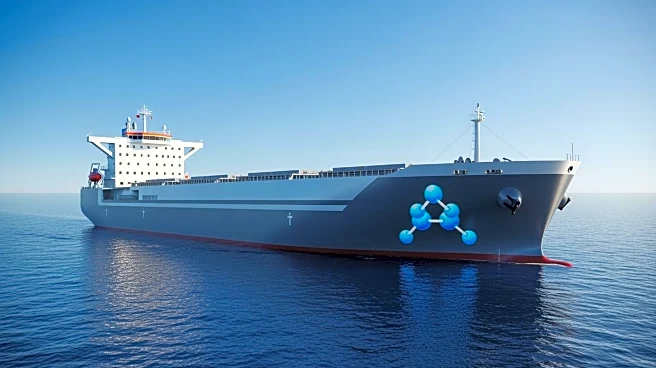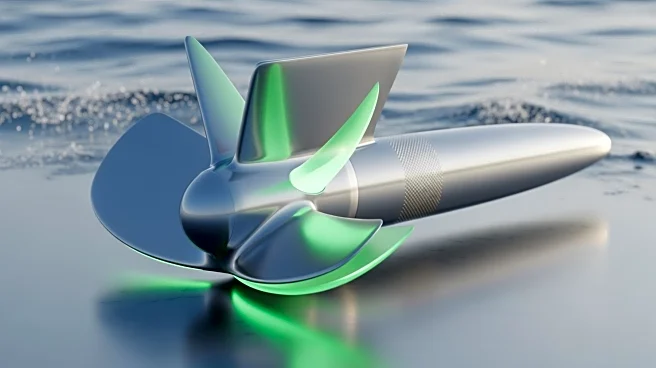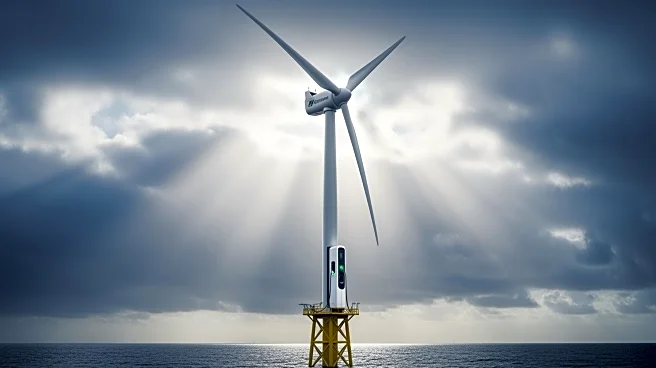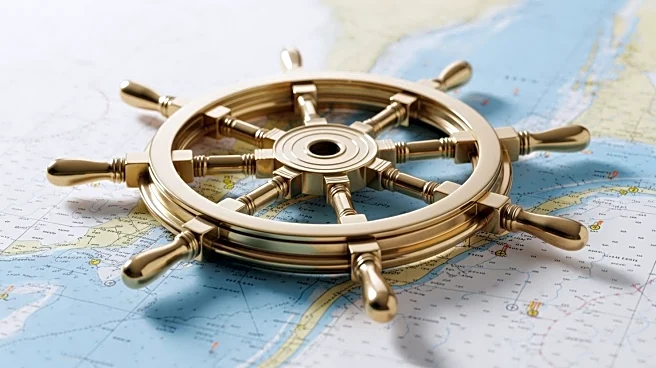What's Happening?
The global ship rudders market is anticipated to grow significantly, reaching a valuation of $2.64 billion by 2029. This growth is driven by a compound annual growth rate (CAGR) of 5.5%, according to a report by The Business Research Company (TBRC). Key
factors contributing to this expansion include the rise of green shipping initiatives, increased global trade, the adoption of electric propulsion, and the growth of the shipbuilding industry. Additionally, the expansion of arctic shipping routes is expected to play a crucial role. The market was valued at $2.05 billion in 2024 and is projected to increase to $2.13 billion in 2025, with a CAGR of 3.9%. The Asia-Pacific region is expected to experience the most rapid growth during this period.
Why It's Important?
The projected growth of the ship rudders market is significant for several reasons. As global trade continues to expand, the demand for efficient and environmentally friendly shipping solutions becomes more critical. The adoption of green shipping initiatives and electric propulsion systems aligns with global efforts to reduce carbon emissions and combat climate change. This market growth also reflects advancements in maritime technology and the increasing importance of sustainable practices in the shipping industry. Stakeholders in the shipbuilding and maritime sectors stand to benefit from these developments, as they align with broader economic and environmental goals.
What's Next?
The continued growth of the ship rudders market will likely lead to increased investment in research and development of more efficient and sustainable rudder technologies. Companies in the maritime industry may focus on enhancing the adaptability and navigation capabilities of ship rudders to meet the demands of modern shipping. Additionally, as the Asia-Pacific region is expected to lead in market growth, regional players may seek to capitalize on this trend by expanding their production capacities and exploring new shipping routes.
Beyond the Headlines
The shift towards green shipping and electric propulsion not only impacts the ship rudders market but also signifies a broader transformation within the maritime industry. This transition may lead to regulatory changes and increased collaboration between governments and private sectors to promote sustainable shipping practices. Furthermore, the emphasis on environmental sustainability could drive innovation in other areas of maritime technology, potentially leading to new business opportunities and partnerships.













